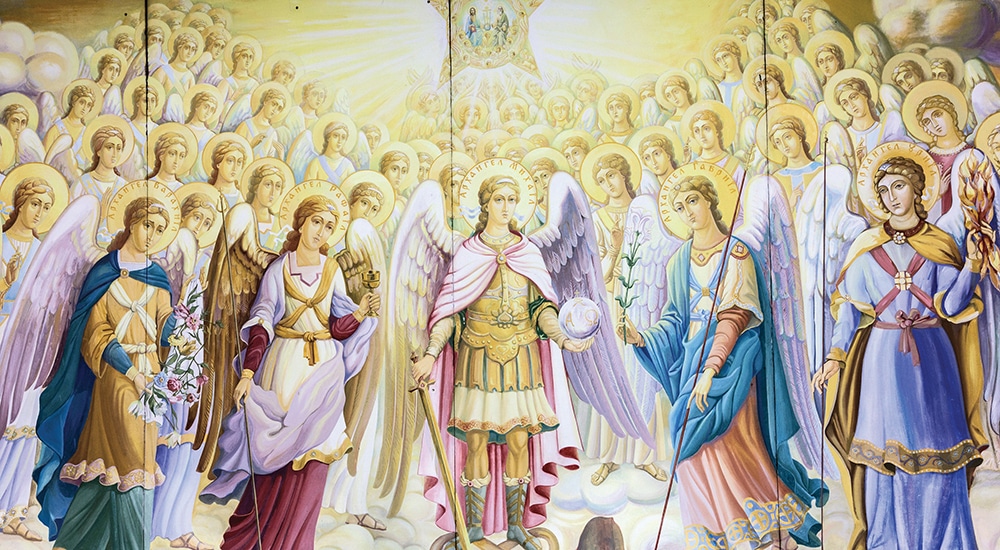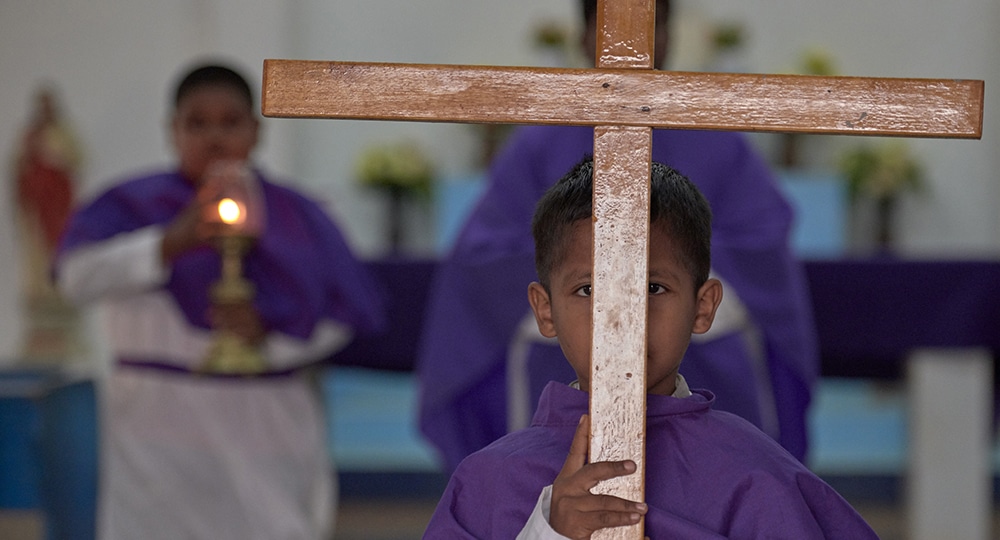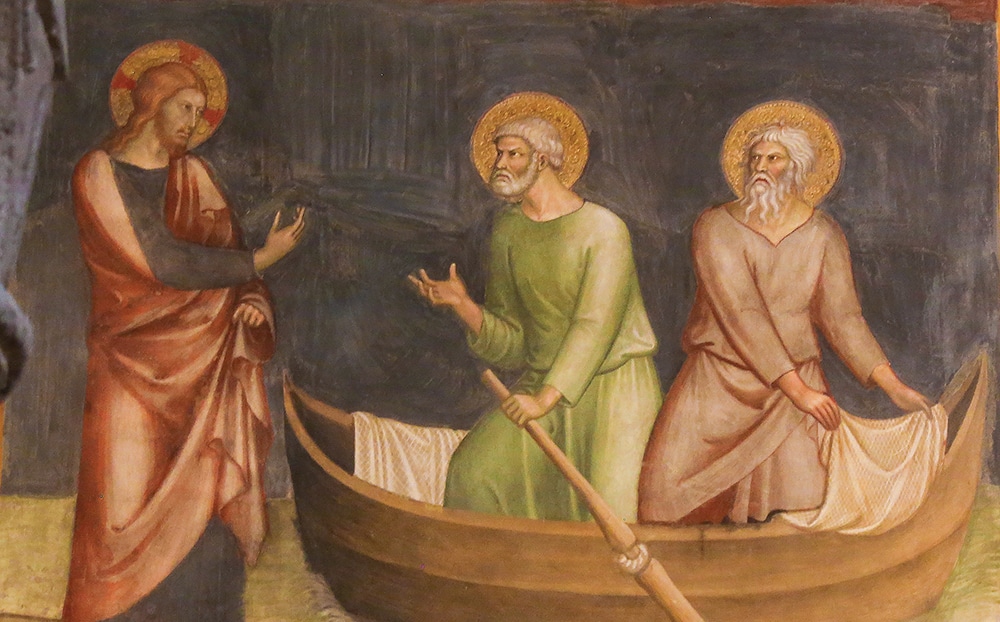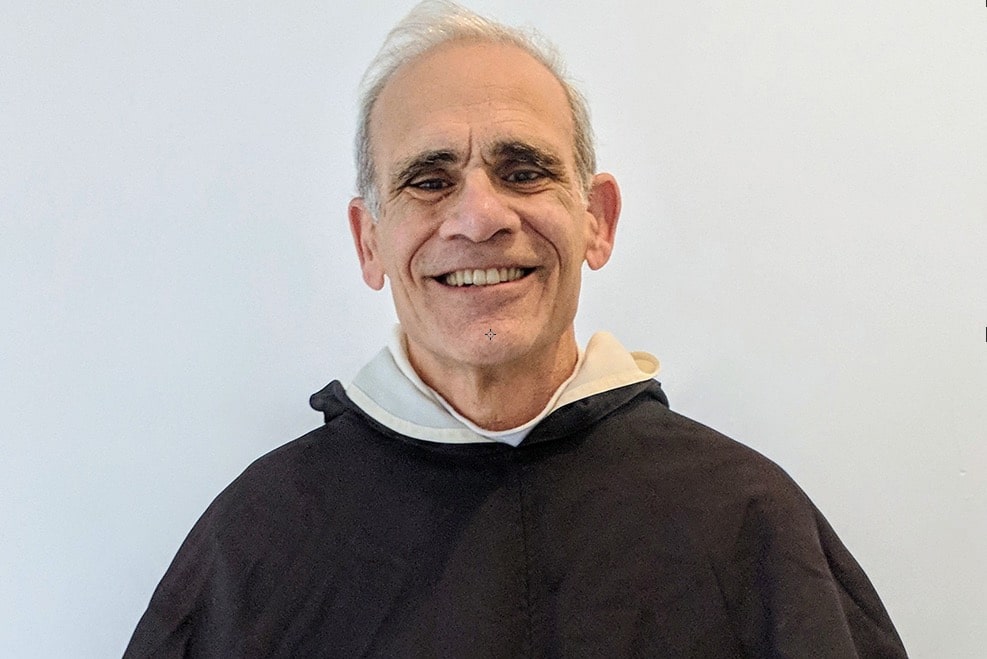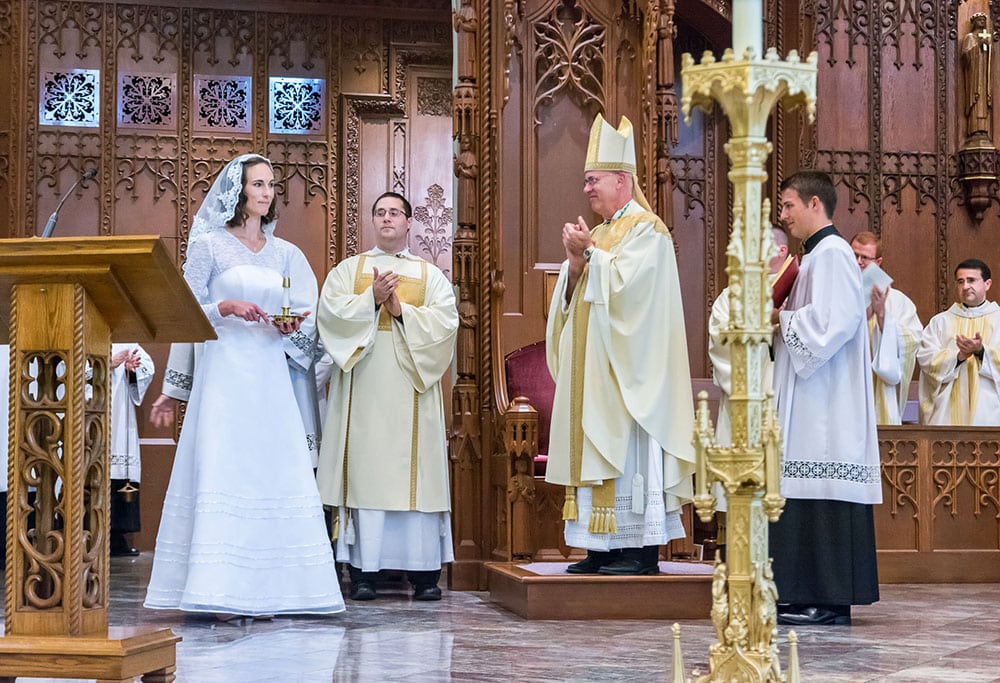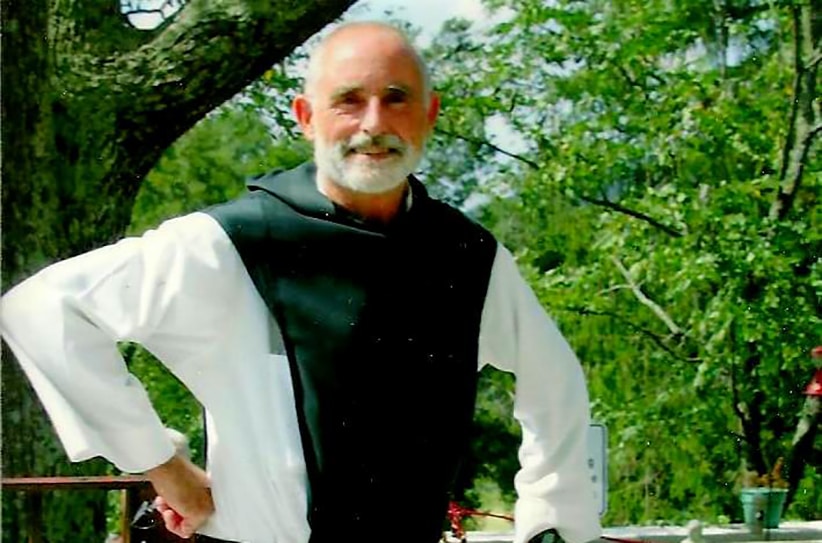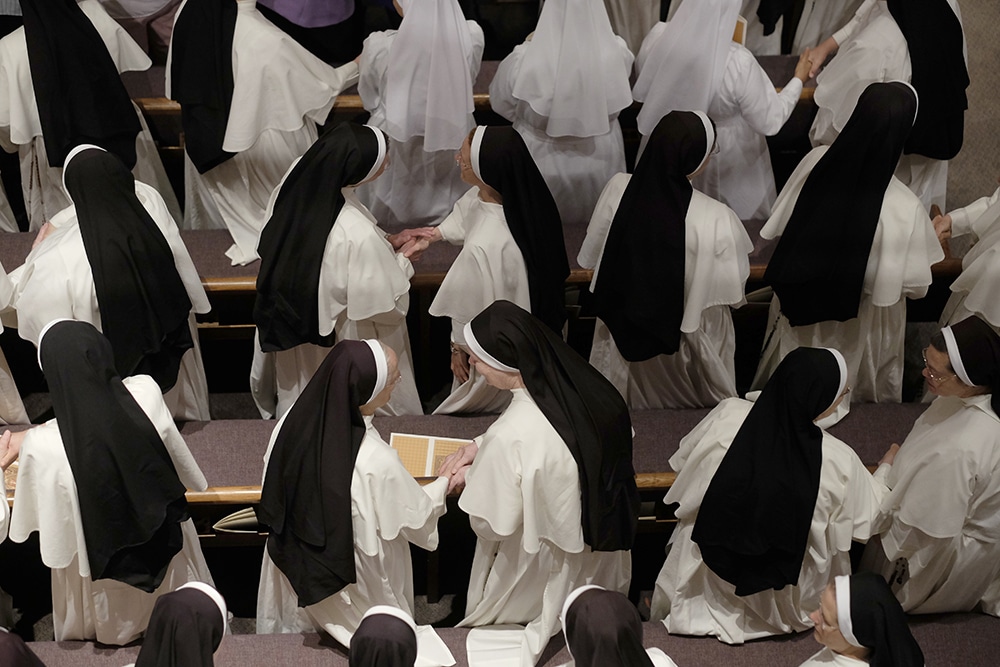For Catholics, angels are more than Christmas tree toppers. Belief in the supernatural appearances of heavenly figures is part of the fabric of our faith. But how much do we know about angels?
Depictions of angels as winged creatures are ubiquitous in art, and belief in them is found across the Abrahamic religious traditions. The Christian conception of angels derives from the Jewish characterization as pure spirit, created beings that are messengers of God (from Greek angelos “messenger”) and were created before humanity was.
Some have feast days, such as the three named archangels — Michael, Gabriel and Raphael — on Sept. 29; the feast of the guardian angels is celebrated Oct. 2. Churches, prayers and devotions are dedicated to these celestial beings.
So what does the Church teach about angels?
Where do angels appear in Scripture?

Angels appear throughout the Bible in both dreams and bodily form: The Book of Revelation recounts a vision of seven angels with trumpets standing before God (cf. Rv 8:1-2). In the Old Testament, Jacob dreams of a ladder with angels ascending and descending (Gn 28:10-12).
Angels are sent to exhibit God’s strength: An angel remained guarding the tree of life after Adam and Eve were cast out of the garden (Gn 3:20-24). King David and the Israelites were to be punished by God by an angel, but with repentance and sacrifice of the king, the angel relented in the plan to destroy Jerusalem (2 Sm 24).
Angels are often sent for protection: In the Book of Exodus, Moses receives an angel sent by God to guard him and lead him into the Promised Land (3:2, 23:20-22). An angel saves three young men — Shadrach, Meshach and Abednego — from being tortured by King Nebuchadnezzar in the third chapter of Daniel. And in perhaps the most famous account of Biblical angelic protection, after he was thrown into the lion’s den, Daniel is saved by an angel who shuts the lions’ mouths (Dn 6:19-22).
Angels offer assistance: An angel brought Elijah food, providing him sustenance for his meeting with the Lord on Mount Horeb (1 Kgs 19), and Joshua was restored as high priest by an angel in the third chapter of Zechariah.
Angels in the New Testament: The first chapter of the Gospel of Luke depicts the angel Gabriel appearing to Zechariah, the father of John the Baptist, to tell of Elizabeth’s miraculous pregnancy, and later he speaks to Mary at the Annunciation, when he announces that she was to become the mother of the Lord. In the Gospel of Matthew, Joseph sees an angel of the Lord in his dreams three times: to make Mary his wife, to flee to Egypt and return to Nazareth. The Gospels chronicle appearances of angels throughout the life of Christ, starting with heralding his birth to shepherds: “Glory to God in the highest and on earth peace to those on whom his favor rests” (Lk 2:14). Later, angels minister to him after he is tempted in the desert (Mt 4:11) and strengthen him during his agony in the Garden of Gethsemane (Lk 22:43). Even after Jesus’ passion, angels appear to two of Christ’s closest disciples: Mary Magdalene sees two angels in white appear at the tomb (Jn 20:12-13), and an angel rescues Peter from imprisonment by King Herod as recorded in the Acts of the Apostles.
| Wasn’t the devil an angel? |
|---|
|
Scripture and the Catechism of the Catholic Church speak of the fall of the angels in which they freely, “radically and irrevocably rejected God and his reign” (CCC, No. 269). Among these fallen angels was Lucifer, whose name means “bearer of light,” and Scripture suggests he held a high position as a good angel. Now referred to as Satan, the devil is depicted in Revelation as a huge red dragon with seven heads, 10 horns, seven crowns and a large tail. This dragon “swept away a third of the stars in the sky and hurled them down to the earth” — interpreted at a third of the angels rejecting God — and chases the pregnant woman of the apocalypse — Mary with Christ in her womb. In Revelation’s depiction of the war in heaven, Michael and his angels fought against the rebellious Satan and his angels who were defeated and cast down from heaven: The dragon “was thrown down to earth, and its angels were thrown down with it” (Rv 12:9).
|
What are the different types of angels?
Church Fathers agreed that there are different classifications of angels with distinct activities and missions. Prominent saints throughout history — including St. Ambrose, St. Jerome, St. Gregory the Great and St. Hildegard — have proposed schemes of angelic organization.
Perhaps most famously, St. Thomas Aquinas (1225-74) in his Summa Theologica developed a Scripture-based structure of three spheres of angels, each containing three orders or choirs.
The first two choirs of angels are often mentioned in liturgical hymns, such as “Holy God, We Praise Thy Name.” Seraphim are in the highest choir of the angelic hierarchy. In the Book of Isaiah, they are described as constantly praising God, and they are the caretakers of God’s throne. Traditionally thought to have a fiery nature, the seraphim are described by St. Thomas Aquinas in his “Summa Theologica” as having “in themselves an inextinguishable light, and that they also perfectly enlighten others.” Seraphim are said to have six wings: two each to cover their faces, to cover their feet and for flying.

Next are the cherubim. Often depicted in Western art as small, plump, winged boys, cherubim are described in the book of Ezekiel as guarding the throne of God and having four faces: one of a man, an ox, a lion and an eagle — symbols later ascribed to the Four Evangelists. Genesis also says that cherubim guard the way to the Tree of Life in the Garden of Eden.
The third choir are the thrones, who serve as elders and symbols of justice. The angels in these first three choirs all see and adore God in his presence, but the angels in the lower hierarchy need the thrones in order to access God.
The second tier of angels help with God’s plan for the universe. Among them are the dominions, who rule and guide the lower choirs of angels. Next are the virtues, who implement the orders from the dominions. Virtues are also believed to govern all of nature. Lastly in this group are the powers, who warrior angels that defend against evil spirits.
The third grouping of heavenly beings are closely involved with human affairs. Principalities, the highest in this tier, care for earthly dwellings, such as cities and countries. Next are the archangels, who are God’s messengers and include the angels named throughout Scripture. They are considered leading angels, as St. Michael led the battle against Satan.
Finally, the last group are simply angels who lead and guide people. These include guardian angels, the protectors of individual people, who are also mentioned in Scripture. In the psalms we read: “For he commands his angels with regard to you, to guard you wherever you go. With their hands they shall support you, lest you strike your foot against a stone” (Ps 91:11-12). Jesus himself reminds us of the reality of guardian angels when he commands us not to despise children since “their angels in heaven always look upon the face of my heavenly Father” (Mt 18:10). The memorial of the Guardian Angels is celebrated on Oct. 2.
| Who are the seven archangels? |
|---|
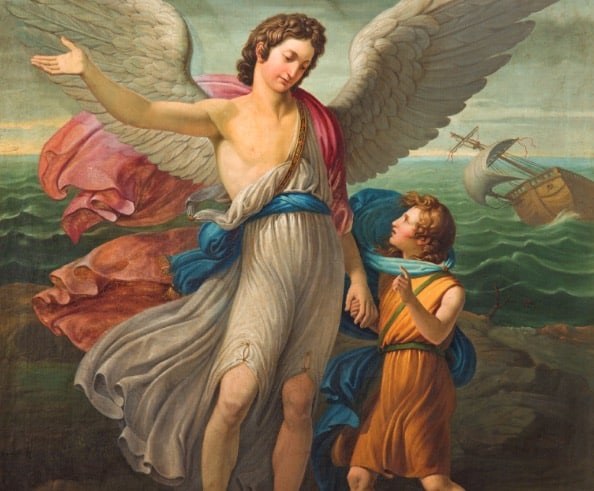 Angels are only mentioned by name on a few occasions in the Bible, but the seven who are known are the archangels. The Book of Tobit mentions “the seven who stand and serve before the glory of the Lord” (Tb 12:15) and Revelation also refers to this group of seven angels. Three of them — Michael, Gabriel and Raphael — share a feast day on Sept. 29, sometimes referred to as Michaelmas. The first three are mentioned in Scripture.
The four remaining archangels are mentioned in other Jewish texts, and their names have been passed down through Tradition.
|
Why is there such a great devotion to St. Michael the Archangel?
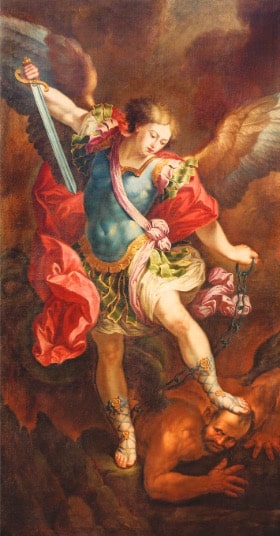
Invoking the “Prince of the Angels” for his protection became a standard practice among the faithful throughout Church history. According to another pious tradition, Pope Leo XIII had a vision around 1886 in which he saw the great power that Satan would exert in the 20th century and the damage he would do to the world and to the Church. In response he composed a prayer, which (in short version) reads: “St. Michael the Archangel, defend us in battle. Be our protection against the wickedness and snares of the devil. May God rebuke him we humbly pray; and do Thou, O Prince of the Heavenly Host, by the Power of God, cast into hell Satan and all the evil spirits, who prowl throughout the world seeking the ruin of souls. Amen.”
He added it to the Leonine prayers to be recited after Low Mass, a practice that is making somewhat of a comeback in some churches after not having been required in more modern times.
St. Michael’s role as protector of the soul can also be seen in the prayers for the dying and those that have died. In the offertory for the Mass for the Dead, he is invoked: “May the standard bearer, St. Michael, lead them into the holy light,” while in the Mass for the Dead hymn we sing, “I have established thee Prince over all souls that are to be received into My Kingdom.”
Similarly, when a soul is dying in peace or in agony, the Catholic Church prays this special prayer for St. Michael’s intercession to commend the departing soul to God: “Let him/her be welcomed by St. Michael, the archangel of God who has deserved to hold first place among the heavenly host. May the holy angels of God come to meet him/her and lead him/her into the heavenly city, Jerusalem. May he/she be received by the blessed apostle, Peter, to whom God has entrusted the keys to the kingdom of heaven” (Roman Ritual).
Has St. Michael appeared to anyone like Gabriel appeared to Mary?
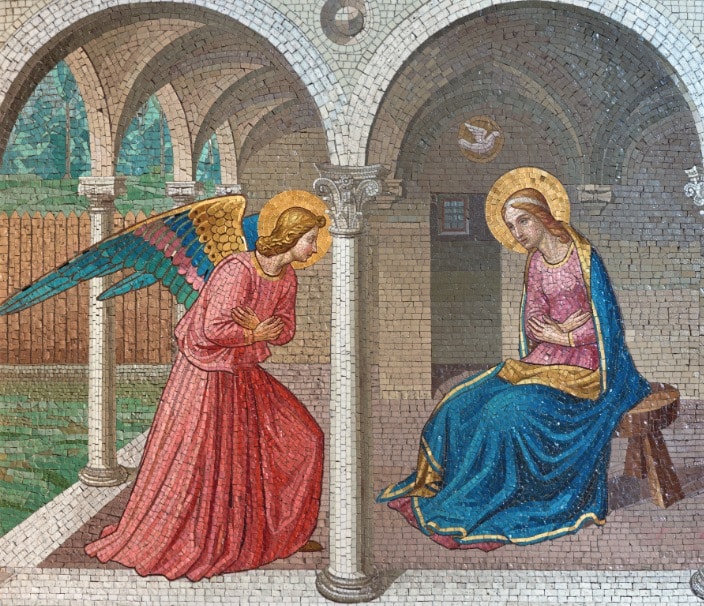
Several times throughout history, there have been reports of visions of St. Michael that enjoy the celebration of the tradition, if not the support and formal recognition of the Church. In what are considered to be the first apparitions of St. Michael in Western Europe, around the year 490, the archangel Michael appeared several times to the Bishop of Sipontum near a cave in the mountains which was to be turned into a church in exchange for the promise of his protection of the nearby town of Sipontum from invaders. The Sanctuary of Monte Sant’Angelo sul Gargano is the oldest shrine in Western Europe dedicated to the archangel Michael and has been an important pilgrimage site since the early Middle Ages visited by many popes, saints and leaders of nations.
Less than a century later, St. Michael was said to have appeared to Pope St. Gregory the Great (April 25, A.D. 590) to end a great plague. Then in 1631 when a plague of smallpox was rampant in the Americas, St. Michael was invoked in a procession in Tlaxcala, Mexico, on April 25 to commemorate that healing in Rome over a millennium before. During the procession, the great archangel was then reported to appear to a young married man named Diego Lázaro de San Francisco, whom he told of a miraculous spring of water that would heal the people. Diego hesitated to act on St. Michael’s instructions, and he, too, fell sick with smallpox. On May 8, St. Michael appeared to heal Diego and again instructed him to reveal the healing spring with the help of his family and friends. Many miracles and healings reportedly ensued at that place which eventually lead to the recognition of the miraculous events by local Church authorities.
One of the most beautiful churches in the most dramatic setting in all of France is Mont Saint Michel, built according to legend at the request of St. Michael himself. The archangel was said to appear in three dreams to St. Aubert, the Bishop of Avranches in France at the beginning of the eighth century. St. Aubert ignored the archangel the first two times, but in the third dream, St. Michael was said to drive his finger into Aubert’s skull with the direction to build him a church at Mont Tombe. St. Aubert built Mont Saint Michel on Oct. 16, 708. The church has become a place of pilgrimage with many miracles, graces and angelic intercessions having been reported by the faithful who at Saint-Gervais Basilica in Avranches can still see St. Aubert’s relic skull, complete with a hole where the archangel’s finger is thought to have punctured it.
Michael O’Neill is the author of “Exploring the Miraculous” (OSV, $20.95). Find more of his work at MiracleHunter.com.
| The Sacred Line of St. Michael |
|---|
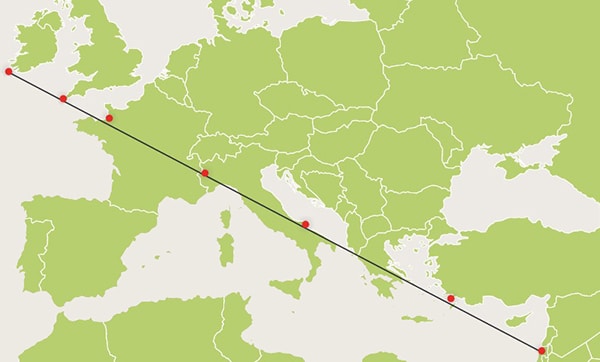 Michael became a symbol of protection and powerful intercessor for the Catholic faithful, starting in the fourth century and beyond with many churches being built and dedicated in his honor. According to pious legend, there is an imaginary line that connects seven major sanctuaries and monasteries over a great distance spanning from Ireland to Israel. The three places of greatest significance — Mont Saint Michel in France; the Sacra of San Miguel in Val de Susa; and the Sanctuary of Monte Sant’Angelo in the Gargano region in Italy — are all the same distance one from the other. “The Sacred Line of Saint Michael the Archangel” represents, according to legend, the slash of the sword that the angel inflicted on the devil as he was banished to hell. Michael became a symbol of protection and powerful intercessor for the Catholic faithful, starting in the fourth century and beyond with many churches being built and dedicated in his honor. According to pious legend, there is an imaginary line that connects seven major sanctuaries and monasteries over a great distance spanning from Ireland to Israel. The three places of greatest significance — Mont Saint Michel in France; the Sacra of San Miguel in Val de Susa; and the Sanctuary of Monte Sant’Angelo in the Gargano region in Italy — are all the same distance one from the other. “The Sacred Line of Saint Michael the Archangel” represents, according to legend, the slash of the sword that the angel inflicted on the devil as he was banished to hell. |

